#grand duchess anna pavlovna
Text
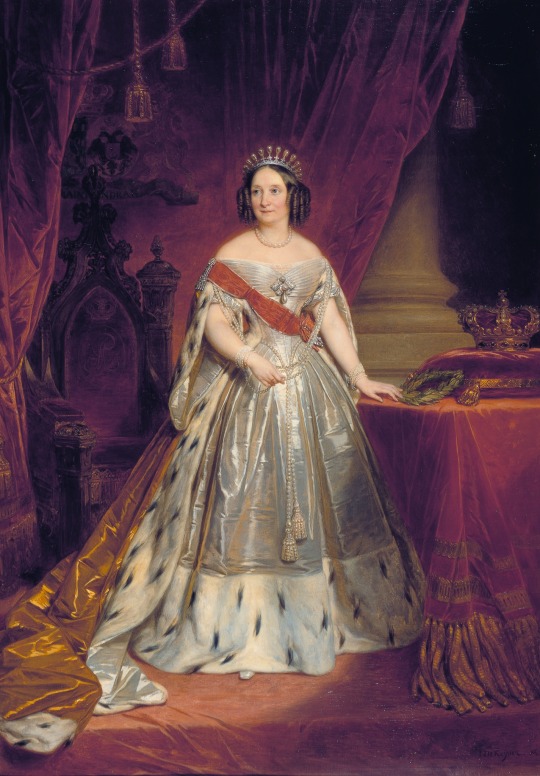
“Queen Anna is a very respectable woman, full of old court traditions and devotion to etiquette, and has not yet sent all decency to hell, as is customary in our time. Our young grand dukes and duchesses, who roll with laughter and make faces behind their aunt's back, would do better if they followed her example."
—Anna Feodorovna Tyutcheva on Queen Anna of the Netherlands, who was born Grand Duchess Anna Pavlovna of Russia.
67 notes
·
View notes
Text
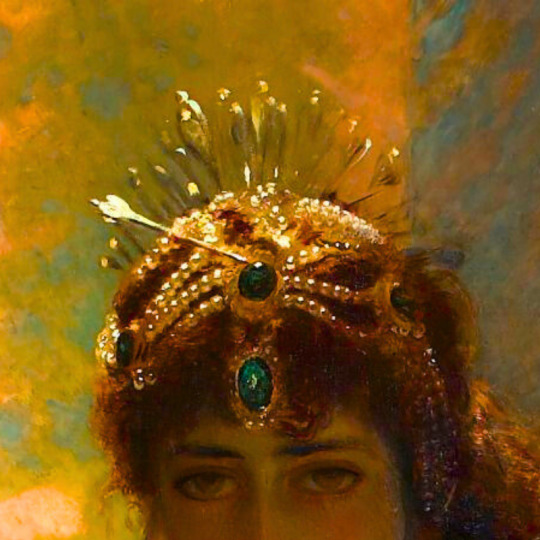
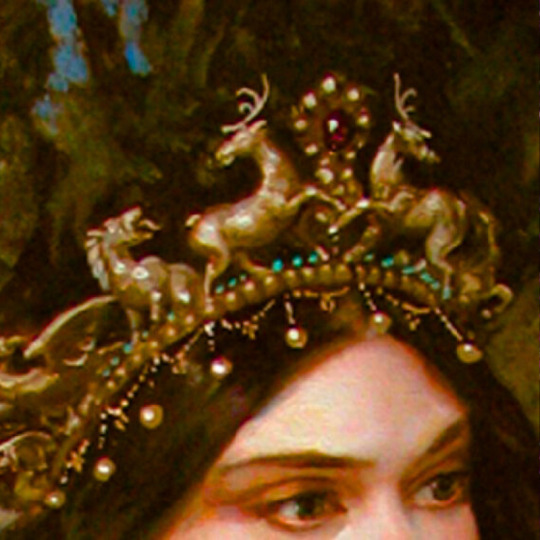
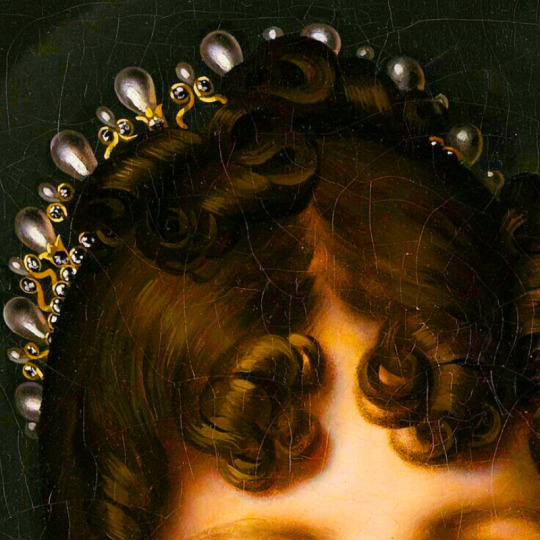
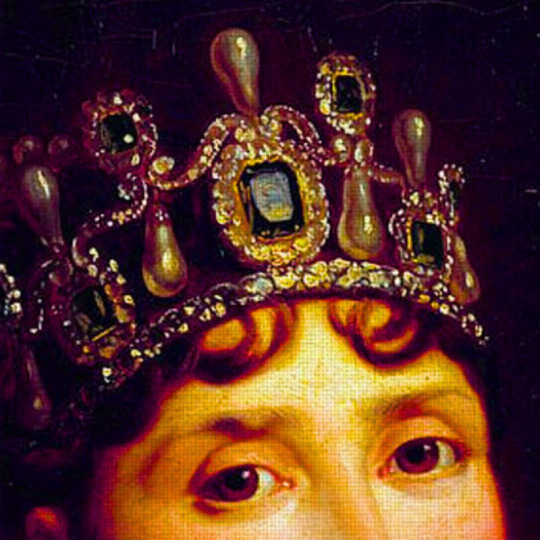
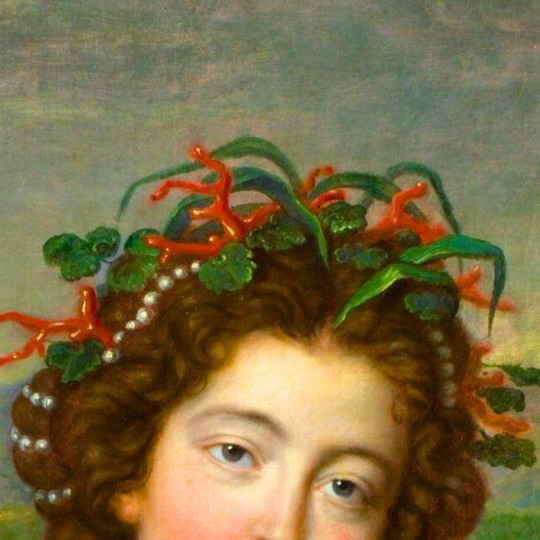
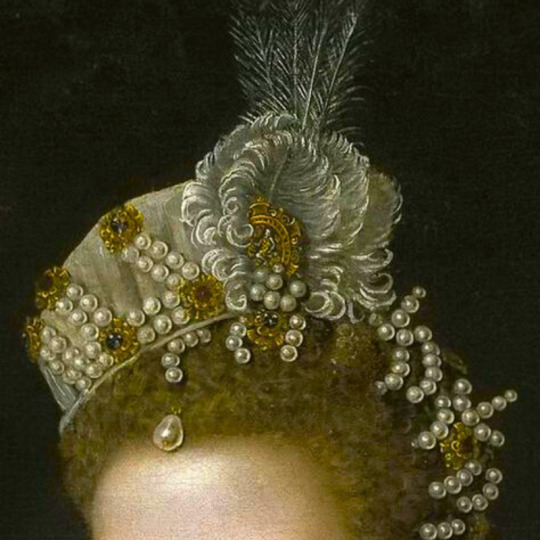
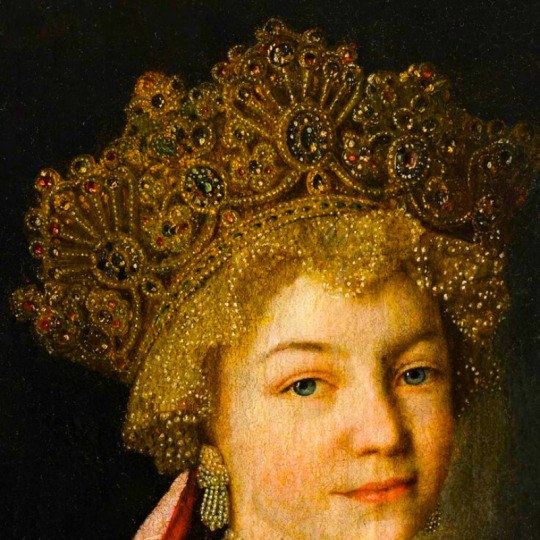
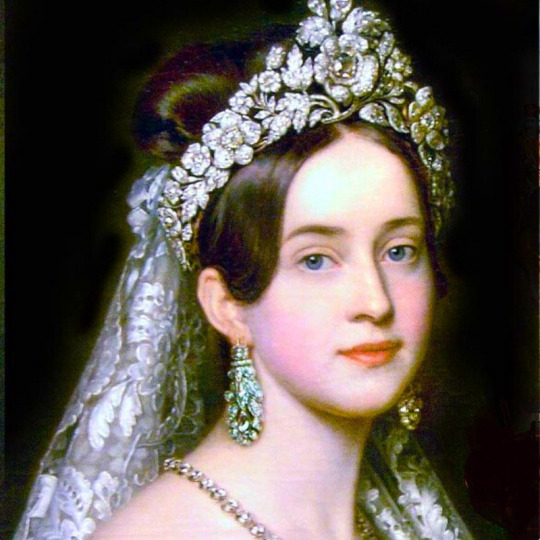
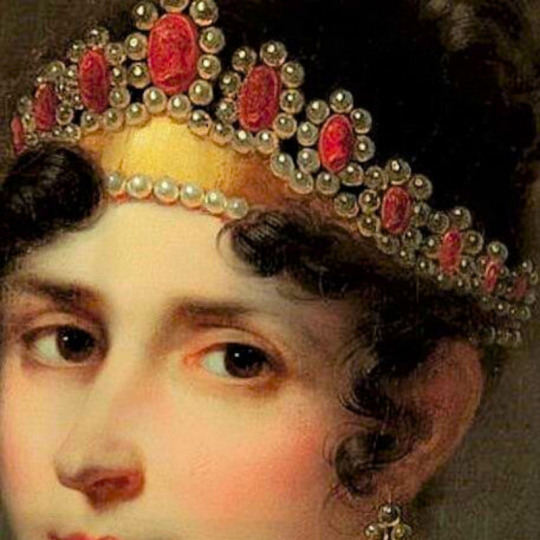
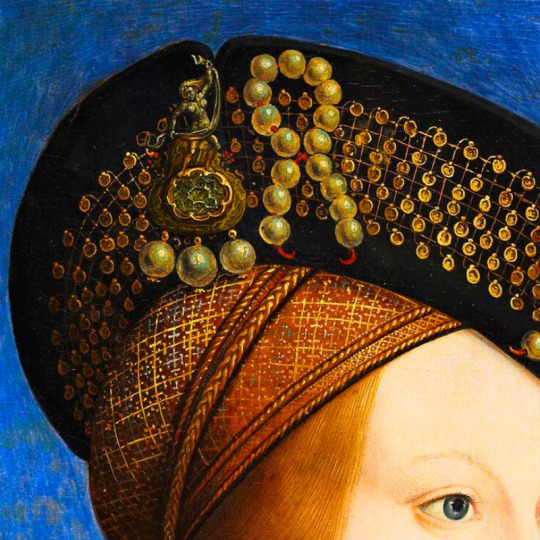
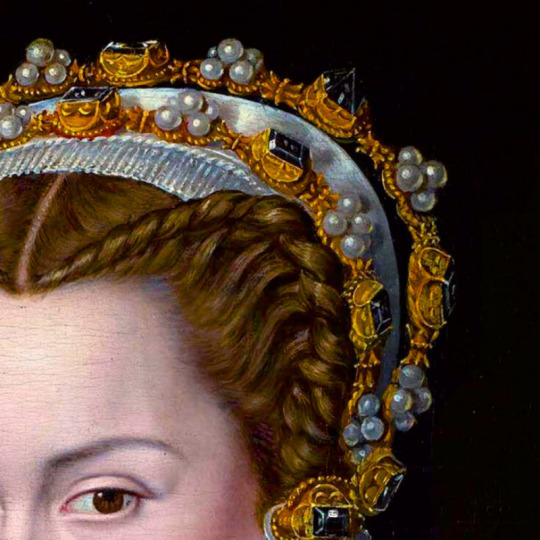

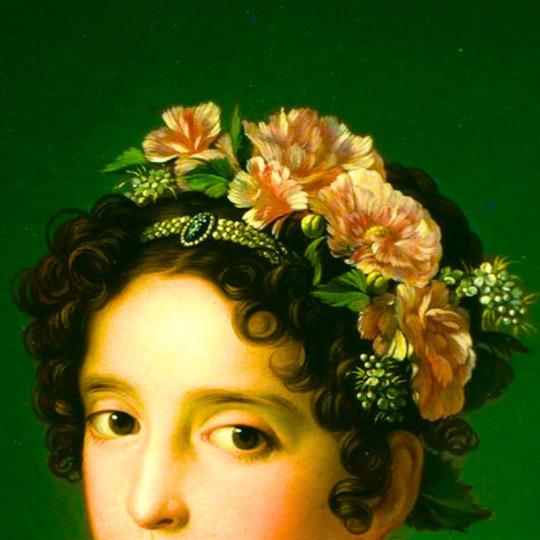
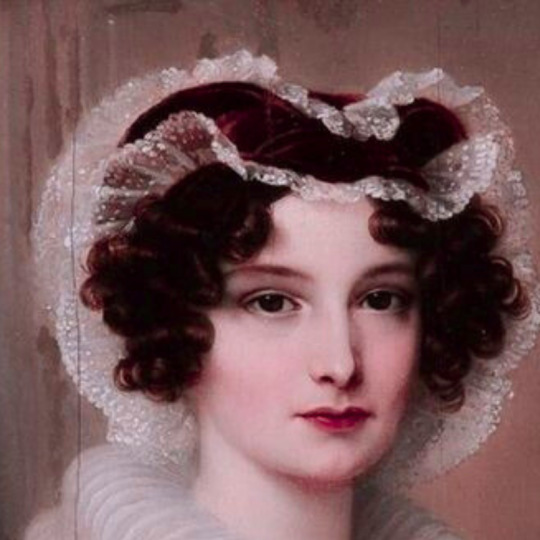
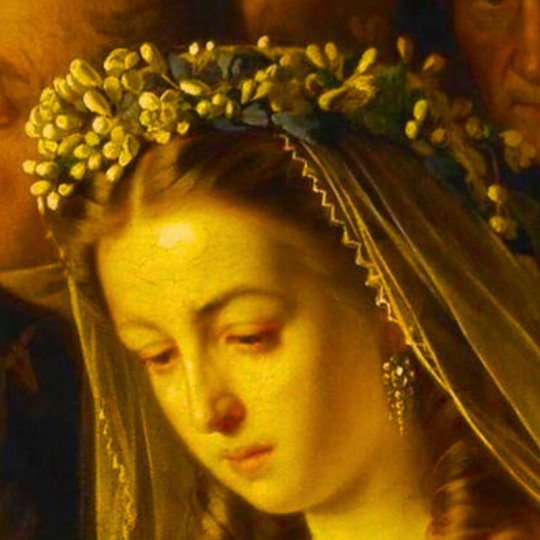
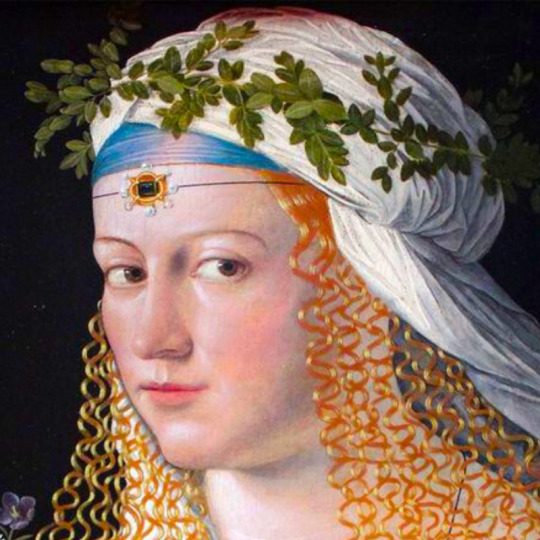
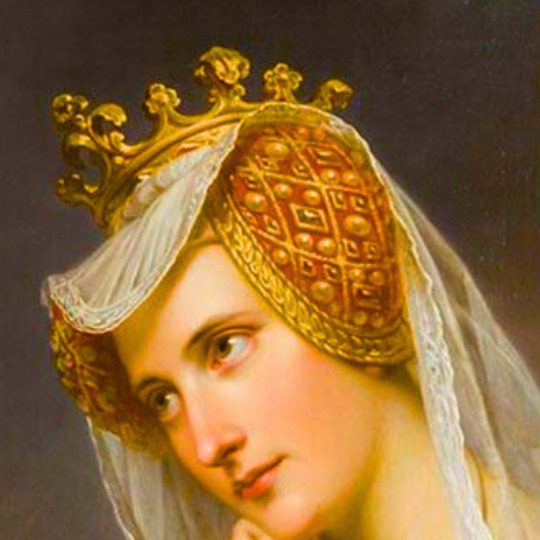
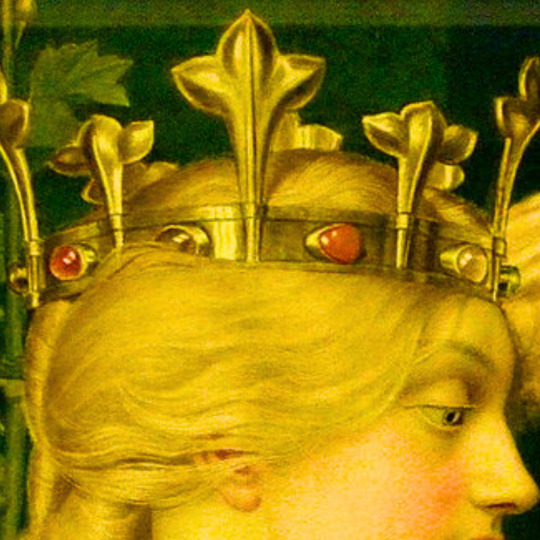
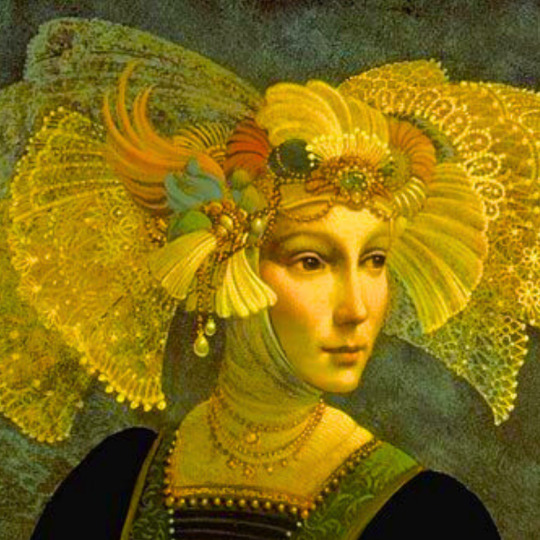

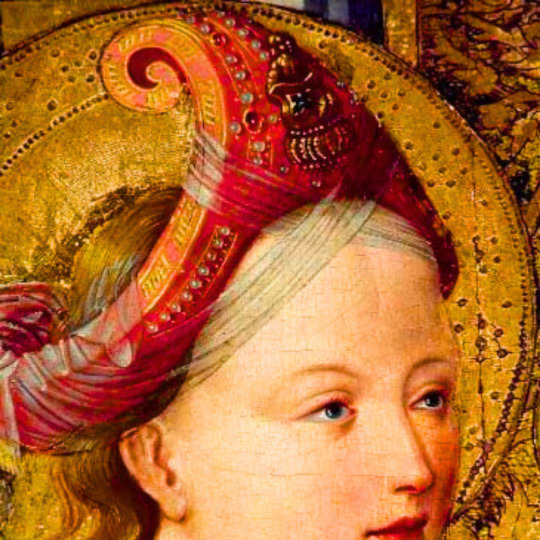
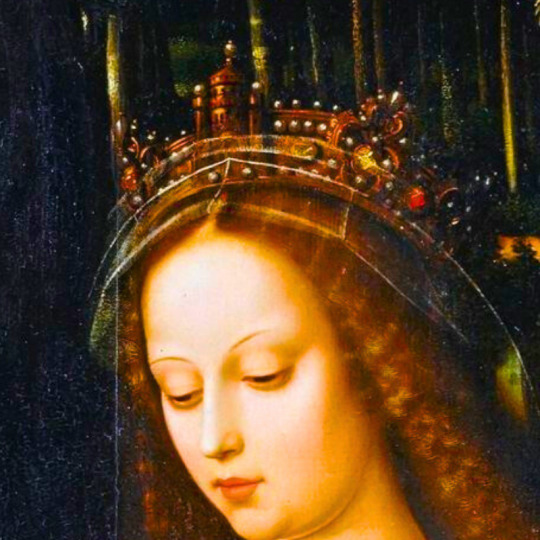
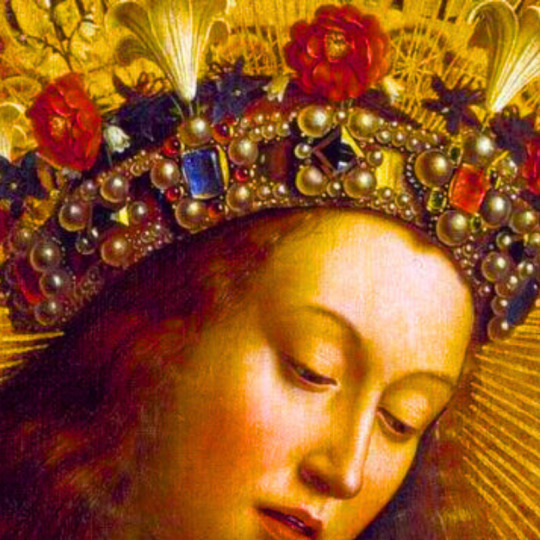
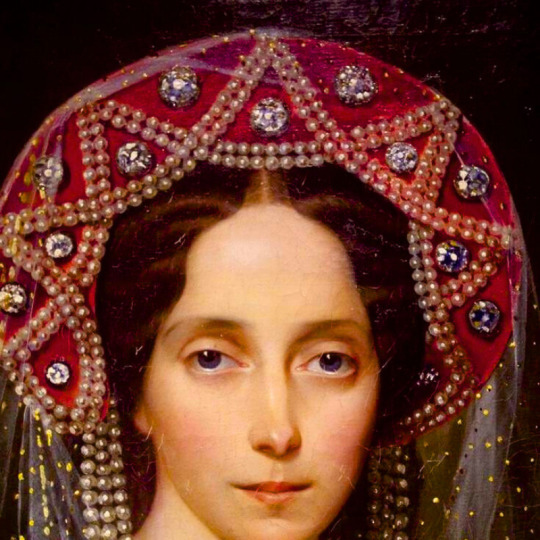
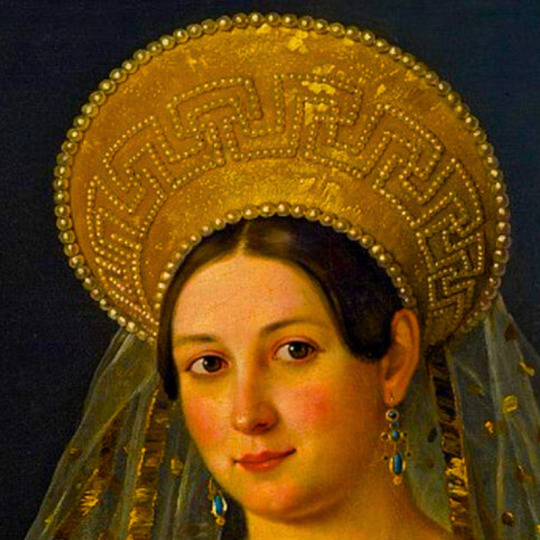

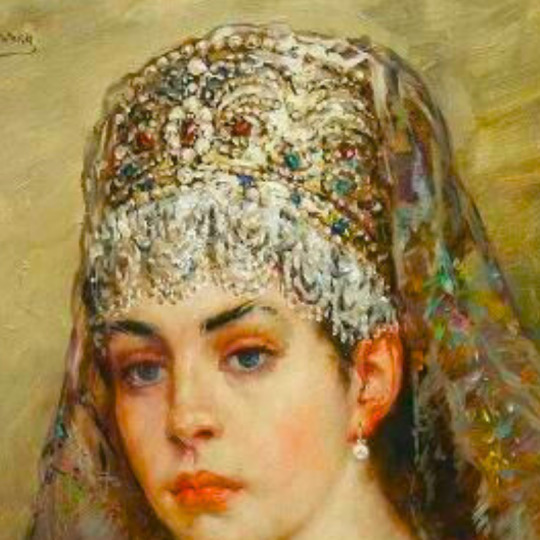
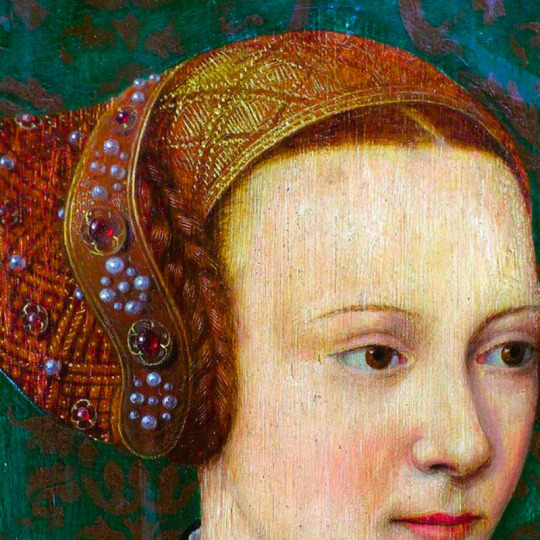
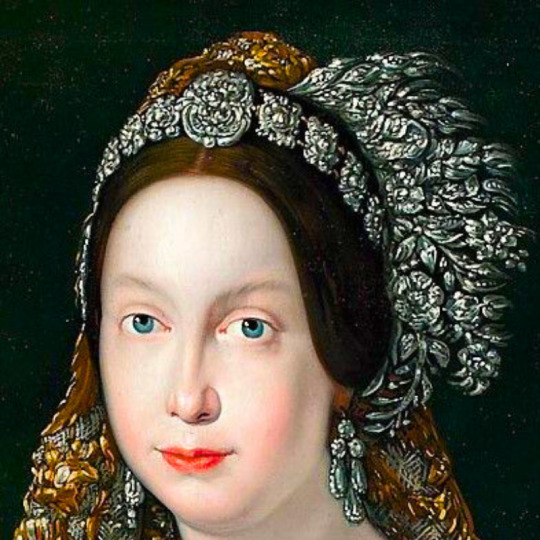

art + hair pieces
#orientatalin by edouard frederic wilhelm richter#cant find this one#this one either its tougher than you think to reverse search them#portrait of josephine de beauharnais by francois gerard#the marquise de seignelay and two of her sons by pierre mignard#infantin isabella clara eugenia at age 13 by alonso sanchez coello#grand duchess alexandra pavlovna romanova of russia but i cant find the artist#marie frederike amalie queen of greece by joseph karl stieler#empress josephine by jean louis viger#queen anna of hungary and bohemia by hans maler#elisabeth of austria by jooris van der straaten#anne wortley by paul van somer#manuela gonzalez velazquez tocando el piano by zacarias gonzalez velazquez#adelingen by heinrich friederich fuger#the unequal marriage by vasili pukirev#idealised portrait of a young women as flora by bartolomeo veneto#a portrait of a noble lady by jan adam kruseman#changing the letter by joseph edward southall#lorelei by james c christensen#the crucifixion by jacob cornelisz van oostsanen#saint dorothy i think this is the title its kinda confusing by i cant find the artist#saint barbara by ambrosius benson#virgin mary by hubert van eyck and jan van eyck#princess maria alexandrovna by ivan makarov#ladies in the blazon room of the winter palace by adolphe ladurner#queen marie therese and her son by charles beaubrun#boyar's wife by konstantin yegorovich#dont know the title but its by barthel bruyn the elder#queen isabella ii of spain by unknown artist#portrait of maria therese charlotte of france by antoine-jean gros
837 notes
·
View notes
Text
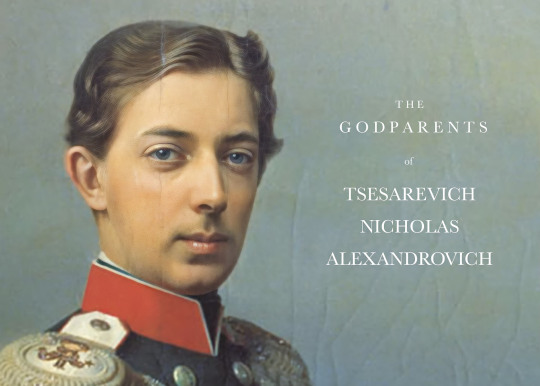
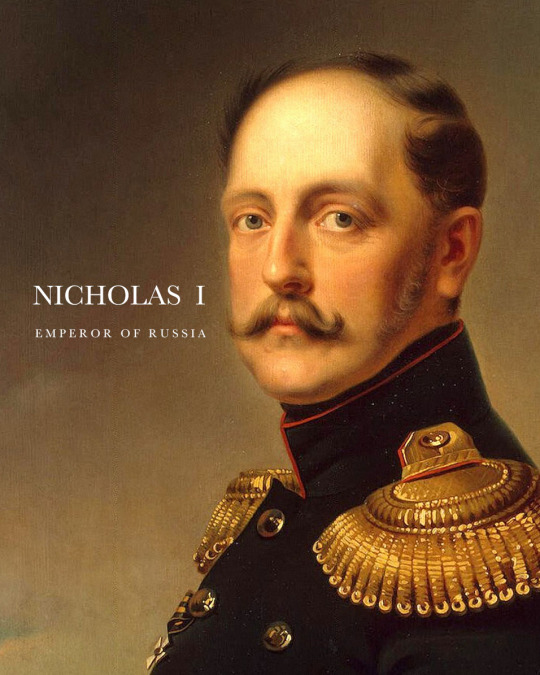
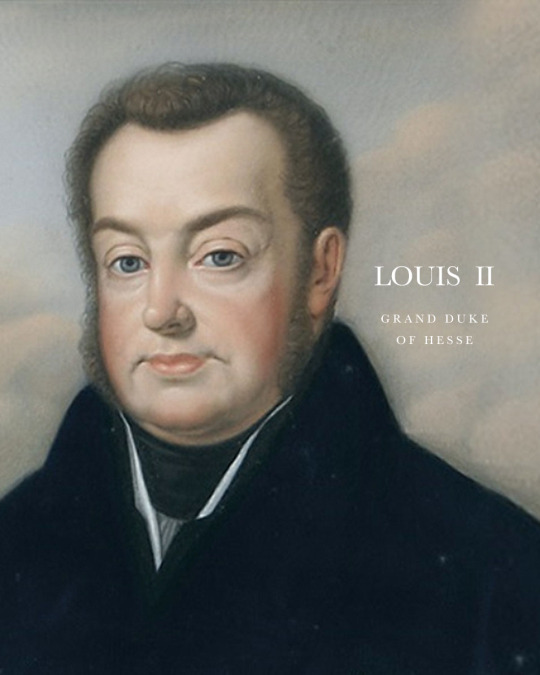


GODPARENTS OF TSESAREVICH NICHOLAS ALEXANDROVICH
Tsesarevich Nicholas Alexandrovich was born as Grand Duke of Russia during the reign of his formidable grandfather Emperor Nicholas I on 20th September 1843. He was the eldest son and second child born to Emperor Alexander II (then Tsesarevich) and his wife Empress Maria Alexandrovna. He was christened in the Grand Palace Church, Tsarskoe Selo, by the Confessor of His Imperial Majesty. He had four known godparents as listed:
NICHOLAS I, EMPEROR OF RUSSIA - his paternal grandfather and namesake was one of his godparents present at his christening. Mainly remembered in history as a reactionary whose controversial reign was marked by geographical expansion, centralisation of administrative policies and repression of dissent. He died in 1855, when the younger Nicholas was only 11 years-old, and thus making him the heir apparent (Tsesarevich).
LOUIS II, GRAND DUKE OF HESSE AND BY RHINE - his maternal grandfather was another of his godparents, but was absent at the christening. The hessian grand duke, like his paternal grandfather, was also considered a reactionary leader, he was in conflict with parliament almost his entire reign. The German revolution in 1848-49 proved his inability to govern. On March 5, 1848 he named his son Louis III as co-regent, and a year later he died.
GRAND DUCHESS ANNA PAVLOVNA OF RUSSIA, QUEEN CONSORT OF THE NETHERLANDS - his great-aunt was the third listed as godparent of the young grand duke, but was also absent at the christening. Queen Anna, the favourite sister of Emperor Nicholas I of Russia and the consort of King William II of the Netherlands, was a Russian patriot who upheld a strict royal etiquette in the Netherlands, where she never felt at home, and identified more as an Imperial Grand Duchess than a Dutch queen. She had no political influence, but was active within charity.
GRAND DUCHESS OLGA NIKOLAEVNA OF RUSSIA, QUEEN CONSORT OF WÜRTTEMBERG - his aunt was one of his godparents present at the christening. She was the younger sister of his father. Attractive, cultured and intelligent, she was considered to be one of the most eligible princesses in Europe. Just three years after her nephew was born, in 1846, she married Crown Prince Karl of Württemberg. Nicholas died just two months before seeing his aunt Queen consort of Württemberg.
Source
9 notes
·
View notes
Note
What is a Romanov Legend that scares you the most? What is a Romanov theory that you wished ended up real? What possible Romanov(OTMAA)marriage are you more likely to see a possibility to happen if they survived? Who is your favorite Grand Duchess besides OTMA?😊😊
Ok ok ok these are some amazing questions so give me a sec to answer them lol!
What is a Romanov legend that scares you the most.
So idk what the term legend really means when it comes to the Romanov family, but i have a superstition or a bad omen that i think is quite sad and it doesn’t really scare me but i think that it counts as a legend and that it deserves to be mentioned.
In the Romanov Family, the name Alexandra is considered a bad omen and some people might say that the names is cursed and whoever bears it will have a terrible fate. This name is considered bad luck because a lot of people in the romanov family had this name and died terribly. I will list them all!
Alexandra Pavlovna (died in childbirth at age 17)
Alexandra Nikolaevna (died in childbirth at age 19)
Alexandra Alexandrovna (died at age 6 of infant meningitis)
Alexandra Georgievna (died in childbirth at age 21)
Alexandra Feodorovna (was executed at the age of 48)
I don’t know why this name was supposedly “cursed” and why the bearers of this name kept dying tragically but i do know that it is very sad.
2. What is a Romanov theory that you wished ended up real
i don’t really know what this question means but i will try my best to answer!
I think a theory that we all wished was true is that there was a survivor of the Romanov family’s execution. I know that there was A LOT of controversy back then on if there was a survivor or not and that if Anna Anderson was the real Anastasia but sadly all of these rumors were false. DNA testing of 1991 and 2007 proves that there were no survivors of the execution and that the imposters that came forward were really imposters.
3. What possible Romanov (OTMAA) marriage are you more likely to see a possibility to happen if they survived
I have a few posts about this where i go into detail about this and i don’t want to write too much in this one question so i will put the links here and here!
4. Who is your favorite Grand Duchess besides OTMA
OTMA are definitely my favorite Grand duchesses but I definitely have a few more!
Grand duchess Olga Konstantinovna

2. Grand Duchess Alexandra Georgievna

3. Grand Duchess Olga Alexandrovna

This question was SO FUN TO ANSWER!!! Thank you for asking!!!
9 notes
·
View notes
Text


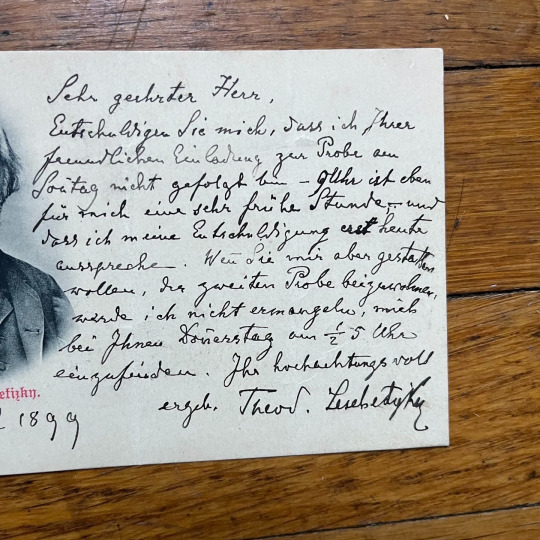

OTD in Music History: Historically important pianist and pedagogue Theodore Leschetizky (1830 - 1915) is born in what is now Poland.
Leschetizky was the beneficiary of an enviable musical pedigree: In his youth, his father took him to study in Vienna with famed pedagogues Simon Sechter (1788 - 1867) and Carl Czerny (1791 - 1957), and at age eleven he actually performed a Czerny piano concerto under the baton of Franz Xaver Wolfgang Mozart (1791 - 1844) -- the son of Wolfgang Amadeus Mozart (1756 - 1791)!
Quickly recognized as a master teacher in his own right, at the invitation of his friend Anton Rubinstein (1829 - 1894), Leschetizky traveled to St. Petersburg to teach in the court of the Grand Duchess Yelena Pavlovna. Remaining there from 1852 to 1877, he served as head of the piano department at the St. Petersburg Conservatory of Music, and married one of his most famous students, Anna Essipova (1851 - 1914).
In 1878, Leschetizky returned to Vienna and set about creating one of the most eminent private piano schools in the world. Promising pianists flocked from all over the world to his villa in the Währing Cottage District, and the list of his students reads like a veritable "Who's Who" of superstars from the "Golden Age of Piano": Ignacy Jan Paderewski, Alexander Brailowsky, Ignaz Friedman, Ossip Gabrilowitsch, Mark Hambourg, Mieczyslaw Horszowski, Benno Moiseiwitsch, Artur Schnabel, Isabelle Vengerova, Paul Wittgenstein… the list could easily go on…
Leschetizky's personal credo was "no life without art, no art without life.”
PICTURED: A postcard which Leschetizky sent to a friend in 1899 – featuring a portrait of himself on it!
The recipient of this postcard, Hugo Conrat (1845 - 1906), is remembered today for having translated and adapted the texts of the traditional Hungarian folk songs that Johannes Brahms (1833 - 1897) used as the basis for his "Zigeunerlieder" ("Gypsy songs") song cycle, Op. 103 and Op. 112. A prominent Viennese businessman, poet, and amateur composer, Conrat was also on friendly terms with legendary Austrian composer and conductor Gustav Mahler (1860 - 1911).
#opera#classical music#music history#bel canto#composer#classical composer#aria#classical studies#classical composers#classical musician#classical musicians#classical history#historian of music#Theodor Leschetizky#Leschetizky#Teodor Leszetycki#classical pianist#piano#professor#teacher#pedagogue#chest voice#diva#prima donna#maestro#concert#Suita#concerto
4 notes
·
View notes
Photo

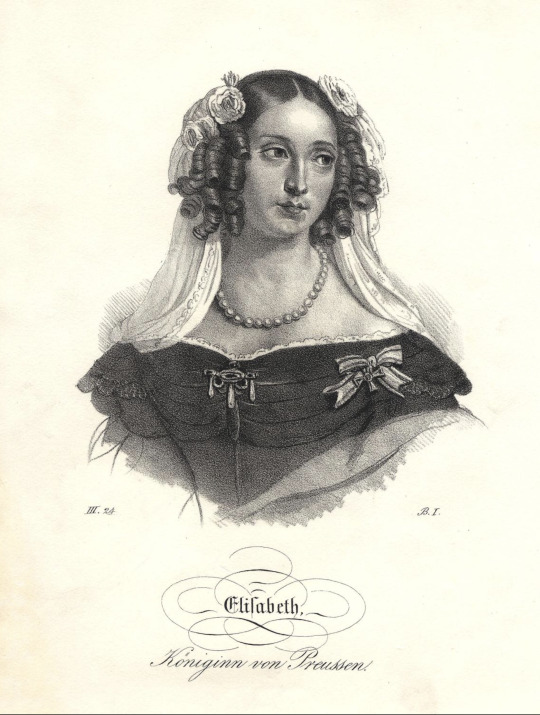





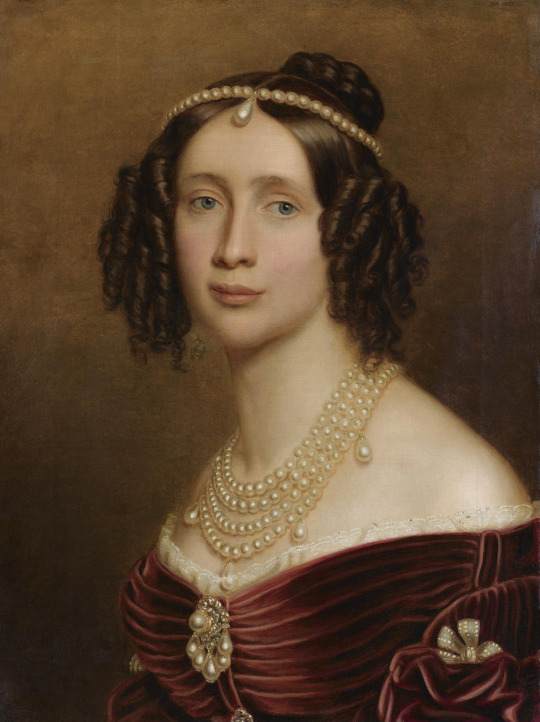

1842 Dresses:
Top: 1842 Alexandra Mikhailovna Karatygina by Joseph-Désiré Court (location ?). From Wikimedia; fixed torn and abraded canvas flaws with Photoshop 1435X1920 @72 546kj.
Second row left: 1842 Elisabeth, Konigin von Preussen by ?. From zvab.com/servlet/BookDetailsPL?bi=21062391519&searchurl=an%3Delisabeth%2Bvon%2Bpreussen%26hl%3Don%26sortby%3D20&cm_sp=snippet-_-srp1-_-image2. 1852X2452 @1445.1Mp.
Second row right: 1842 Erzherzogin by Josef Kriehuber (Albertina Museum - Wien, Austria). From sammlungenonline.albertina.at/Default.aspx 777X984 @72 1.1Mj.
Third row left: 1842 Frederica, Queen of Hanover by Louis Ammy Blanc (location ?). From liveinternet.ru/users/3251944/post356631528/; image substantially cropped due to flaws along all of the edges that may be due to creasing the canvas 729X1073 @72 265k.
Third row right: 1842 Fürstin Eleonora Schwarzenberg, geb. Prinzessin Liechtenstein by Josef Kriehuber (Albertina Museum - Wien, Austria).From sammlungenonline.albertina.at/Default.aspx 802X1004 @72 1.1Mp.
Fourth row left: 1842 Grand Duchess Elena Pavlovna by Joseph-Désiré Court (State Russian Museum - St. Petersburg, St. Petersburg Federal City, Russia). From books0977.tumblr.com/post/83960868366/portrait-of-grand-duchess-elena-pavlovna-1842; removed spots. with Photoshop 600X1039 @72 238kj.
Fourth row right: 1842 Großherzogin Maria Antonia von Toskana (1814-1898) by Félicie Beaudin (auctioned by Dorotheum). The background was recolored with Photoshop to contrast with her coiffure. Also removed spots with Photoshop.
Fifth Row: 1842 Maria Anna of Bavaria, Queen of Saxony by Joseph Karl Stieler (location ?) From the lost gallery; removed spots & flaws w Pshop 1459X1951 @72 951kj.
Bottom: 1842 Maria Anna, Queen of Saxony print from Stieler closeup 2079X2645 @72 1.5M. I did not record the source of this image so I found it years ago.
#1842 fashion#early Victorian fashion#Biedermeier fashion#Romantic era fashion#Alexandra Mikhailovna Karatygina#Joseph-Désiré Court#Königin Elisabeth von Preussen#Joseph Kreihuber#Queen Frederica of Hanover#Louis Ammy Blanc#Eleonora Schwarzenberg#Grand Princess Elena Pavlovn#Maria Antonia von Toskana#Félicie Beaudin#Queen Maria Anna of Saxony#straight hair#veil#side curl coiffure#V neckline#pleated bodice#V waistline#ferroniere#brooch#bow
6 notes
·
View notes
Text
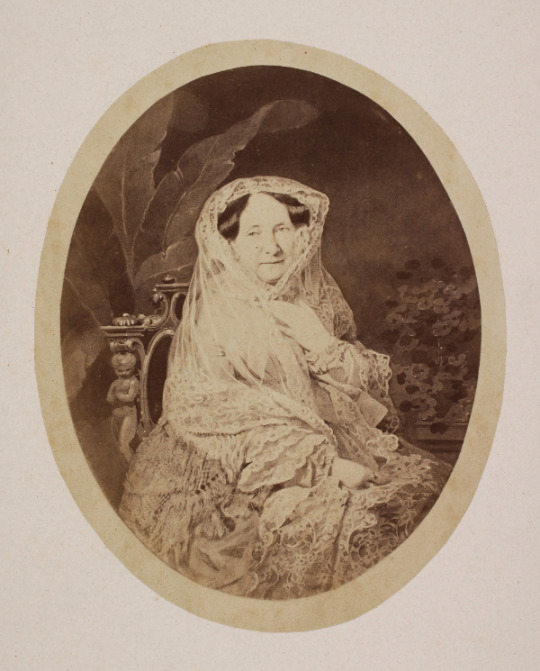
Grand Duchess Anna Pavlovna of Russia, Queen consort of the Netherlands, 1855.
#grand duchess anna pavlovna#queen consort anna of the netherlands#dutch royal family#dutch royalty#dutch royal#romanov#1855#1850s
30 notes
·
View notes
Text
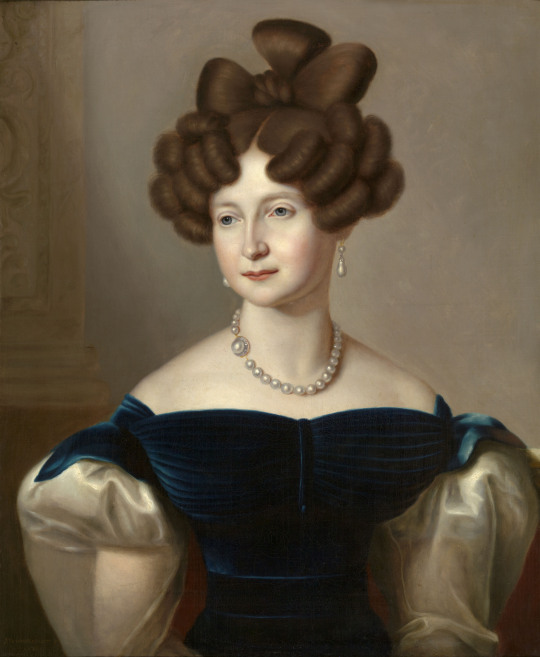
Born on this day in Romanov History: January 18th, 1795 Grand Duchess Anna Pavlovna
Anna was born at Gatchina Palace as the 8th child and 6th daughter of Tsesarevich Pavel Petrovich (future Emperor Pavel I) and his wife Maria Feodorovna (nee Princess Sophie Dorothea of Wüttemburg) and was named after great-grandmother, Grand Duchess Anna Petrovna. Anna spent most of her childhood being raised by her mother in Tsarskoe Selo, alongside her 2 younger brothers Grand Dukes Nicholas (future Emperor Nicholas I) and Michael, the three young children formed a strong lifelong bond and even called themselves "The Triopathy". Anna recieved an excellent and broad education, including foreign languages and mathematics and was especially good at handicrafts and painting. When only 14 years old, Anna received her very first marriage proposal when, after failing to secure an engagement with Anna's older sister Ekaterina, Napoleon Bonaparte tried to ask for Anna's hand in marriage to secure the tenuous alliance between France and Russia as well as legitimize his own rule through marriage. Both Anna's mother and eldest brother, Emperor Alexander I, were against the match and managed to delay long enough for Napoleon to lose interest before going on to marry Archduchess Marie Louise. Anna eventually did marry on February 21, 1816 in the Chapel of the Winter Palace to King William II of the Netherlands (then Prince of Orange). Alexander I first proposed the match as a symbol of the alliance created after the Congress of Vienna, though the couple was introduced before any engagement was to take place to allow Anna to consent to the match. While Anna was allowed to remain Russian Orthodox, it was agreed that their children would be raised Protestant. The couple had 5 children: William III (1817-1890), Alexander (1818-1848), Henry (1820-1879), Ernst (1822-1822), and Wilhelmina (1824-1897). Anna was shocked by the differences between the Russian and Dutch courts and despite being an active Princess and later Queen learning the history, language and culture of her new country, those who met her always said she remained a Russian Grand Duchess more than she ever became Queen of the Netherlands. Anna and William lived in Brussels until the Belgian Revolution of 1830 forced them to move. Anna founded a hospital for soldiers wounded in the Revolution in 1830, a school where poor women and girls were able to be educated in sewing, more than 50 orphanages, and a Russian boys choir. After the death of her husband, Anna retired from the court and lived a quiet and discreet life until her death at age 70 on March 1, 1865 after suffering from a lung disease. Anna outlived all of her brothers and sisters and was buried in Nieuwe Kerk church next to her husband.
Image is of Grand Duchess Anna Pavlovna, when Princess of Orange, by Jan Baptist van der Hulst, 1820.
#Grand Duchess Anna Pavlovna#Anna Pavlovna#queen Anna Pavlovna#Romanov Birthdays#jan 18#russian empire#romanov family#romanov dynasty#imperial russia#russian imperial family
12 notes
·
View notes
Photo
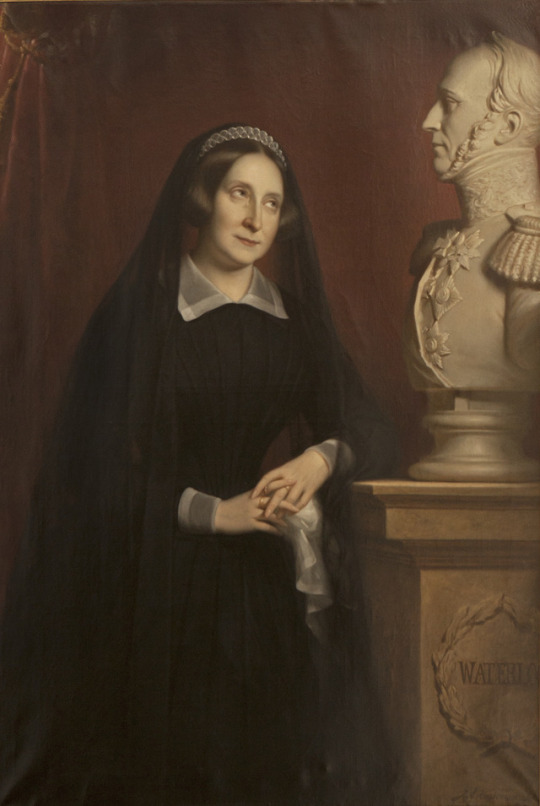
Grand Duchess Anna Pavlovna, Queen of the Netherlands as a widow.
#Grand Duchess Anna Pavlovna#anna pavlovna#queen anna of the netherlands#mourning#mourning dress#romanov#royalty#russian royalty
42 notes
·
View notes
Photo

The Whole World Mourns Charlotte Leopold was never the same again. Almost fifty years later he told his niece Queen Victoria that he had 'never recovered the feeling of happiness' that 'blessed' his short life with Charlotte.
#alison plowden#amelia of the united kingdom#carlton house#caroline of brunswick queen of the united kingdom (princess of wales)#caroline&charlotte#charlotte of mecklenburg-strelitz (queen of the united kingdom)#charlotte&leopold#christian friedrich baron stockmar#claremont#coburg#elizabeth of the united kingdom(landgravine of hesse-homburg)#frederica charlotte of prussia duchess of york and albany#frederick duke of york#george IV (prince of wales and prince regent)#grand duchess anna pavlovna queen of the netherlands#james chambers#lady charlotte bury#lord george byron#maria countess of ilchester#mary duchess of gloucester and edinburgh#mrs alicia campbell#oatlands#prince leopold of saxe-coburg-gotha (later king of the belgians)#princess charlotte of wales#sir everard home#the rev.dr william short#victoria queen of the united kingdom#william II of the netherlands (hereditary prince of orange)
2 notes
·
View notes
Text

Grand Duchess Anna Pavlovna of Russia, later Queen of the Netherlands.
28 notes
·
View notes
Photo

Anna Pavlovna of Russia, Queen of the Netherlands (18 January 1795 - 1 March 1865)
#anna pavlovna of russia#grand duchess of russia#queen of the netherlands#daughter of paul i of russia#wife of william ii of the netherlands#history#women in history#18th century#19th century#art
11 notes
·
View notes
Photo
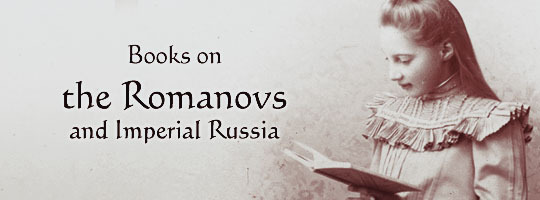
Here is a list of books you might want to read if you are interested in the Romanov dynasty and the country and society they goverened. I have read some, I own most and some may be of warying quality and reliability. Some include periods before and after the Russian Empire. Some could be fitted into more than one cathegory. A few are not available in English.I will try to update this list from time to time as I find new books or new books become published. Enjoy!
Diaries and correspondence of the Romanovs
The Memoirs of Catherine the Great
Love and Conquest: Personal Correspondence of Catherine the Great and Prince Grigory Potemkin
Chere Annette: Letters from St. Petersburg, 1820-1828: The Correspondence of the Empress Maria Feodorovna to Her Daughter the Grand Duchess Anna Pavlovna
A Lifelong Passion: Nicholas and Alexandra: Their Own Story
Romanov Family Yearbook: On This Date in Their Own Words
The Letters of Tsar Nicholas and Empress Marie
The Correspondence Of The Empress Alexandra Of Russia With Ernst Ludwig And Eleonore, Grand Duke And Duchess Of Hesse
The Complete Wartime Correspondence of Tsar Nicholas II and the Empress Alexandra: April 1914-March 1917
In the Steps of the Romanovs: Final Two Years of the Last Russian Imperial Family (1916-1918)
The Last Diary of Tsaritsa Alexandra
The Diary of Olga Romanov: Royal Witness to the Russian Revolution
Journal of a Russian Grand Duchess: Complete Annotated 1913 Diary of Olga Romanov, Eldest Daughter of the Last Tsar
Tatiana Romanov, Daughter of the Last Tsar: Diaries and Letters, 1913–1918
Maria Romanov: Third Daughter of the Last Tsar, Diaries and Letters, 1908–1918
1913 Diary of Grand Duchess Maria Nikolaevna: Complete Tercentennial Journal of the Third Daughter of the Last Tsar
Maria and Anastasia: The Youngest Romanov Grand Duchesses In Their Own Words
Correspondence of the Russian Grand Duchesses: Letters of the Daughters of the Last Tsar
Michael Romanov: Brother of the Last Tsar Diaries and Letters, 1916-1918
Diaries and correspondence of other people
Russian journal of Lady Londonderry, 1836-37
Letters from Russia
The Diaries of Sofia Tolstoy
Letters from St Petersburg: A Siamese Prince at the Court of the Last Tsar
The Romanovs Under House Arrest: From the 1917 Diary of a Palace Priest
Private Diary of Mathilde Kschessinska
A Countess in Limbo: Diaries in War & Revolution; Russia 1914-1920, France 1939-1947
Memoirs by the Romanovs
Once a Grand Duke
Always a Grand Duke
25 Chapters of My Life
Education of a Princess
A Princess in Exile
A Romanov Diary: The Autobiography of H.I.& R.H. Grand Duchess George
My life in Russia's service--then and now
Memories In The Marble Palace
Memoirs by other people
The Memoirs of Princess Dashkova
Lost Splendor
Memories of the Russian Court
My Mission to Russia and Other Diplomatic Memories
An Ambassador's Memoirs
The Real Tsaritsa
Thirteen Years at the Russian Court
The False Anastasia
Six Years at the Russian Court
Before the Storm
The Life and Tragedy of Alexandra Feodorovna Empress of Russia
Left Behind
At the Court of the Last Tsar
Memories of Russia 1916-1919
The Emperor Nicholas II: As I Knew Him
The Sokolov Investigation of the Alleged Murder of the Russian Imperial Family
The Russia That I Loved
Dancing in Petersburg: The Memoirs of Kschessinska
On the Estate: Memoirs of a Russian Lady before the Revolution
Theater Street
The Other Russia: The Experience of Exile
Russia Through Women's Eyes: Autobiographies from Tsarist Russia
The Fall of the Romanovs: Political Dreams and Personal Struggles in a Time of Revolution
Tommorow Will Come
Fanny Lear: Love and Scandal in Tsarist Russia
The Coronation of Tsar Nicholas II
Days of the Russian Revolution: Memoirs from the right, 1905-1917
The House by the Dvina: A Russian Childhood
Under Three Tsars
Last days at Tsarskoe Selo
Last Years of the Court at Tsarskoe Selo
The Real Romanovs
Biographies of the Romanovs and general topics concerning them
The Romanovs: Autocrats of All the Russias
The Romanovs: 1613-1918
The Romanovs
The Romanovs: Ruling Russia 1613-1917
Secret Lives of the Tsars: Three Centuries of Autocracy, Debauchery, Betrayal, Murder, and Madness from Romanov Russia
The Tragic Dynasty: A History of the Romanovs
The Family Romanov: Murder, Rebellion, and the Fall of Imperial Russia
Romanov Autumn: Stories from the Last Century of Imperial Russia
The Romanovs, 1818–1959: Alexander II of Russia and His Family
Alexis, Tsar of all the Russias
Sophia: Regent of Russia, 1657-1704
Peter the Great: His Life and World
Peter the Great
Terrible Tsarinas: Five Russian Women in Power
Elizabeth and Catherine: Empresses of All the Russias
Catherine the Great
Catherine the Great: Portrait of a Woman
Catherine the Great & Potemkin: the imperial love affair
Catherine the Great: Love, Sex, and Power
Great Catherine: The Life of Catherine the Great, Empress of Russia
The Empress of Art: Catherine the Great and the Transformation of Russia
Alexander I: The Tsar Who Defeated Napoleon
Alexander I: Tsar of War and Peace
Alexander of Russia: Napoleon's Conqueror
Nicholas I and Official Nationality in Russia 1825 - 1855
Nicholas I: Emperor and Autocrat of All the Russias
Becoming a Romanov. Grand Duchess Elena of Russia and her World
Alexander II: The Last Great Tsar
Katia: Wife Before God
Alexander III: His Life and Reign
Little Mother of Russia: A Biography of the Empress Marie Feodorovna
Nicholas II: Emperor of All the Russias
Nicholas II: Last of the Tsars
The Last of the Tsars : Nicholas II and the Russian Revolution
The Last Tsar: The Life and Death of Nicholas II
King, Kaiser, Tsar: Three Royal Cousins Who Led The World To War
A Gathered Radiance: The Life of Alexandra Romanov, Russia's Last Empress
The Last Empress: The Life and Times of Alexandra Feodorovna, Tsarina of Russia
Alexandra
Alexandra: The Last Tsarina
Nicholas and Alexandra
Alix and Nicky: The Passion of the Last Tsar and Tsarina
The Last Tsar & Tsarina
The Four Graces: Queen Victoria's Hessian Granddaughters
The Imperial Tea Party: Family, Politics and Betrayal: the Ill-Fated British and Russian Royal Alliance
From Splendor to Revolution: The Romanov Women, 1847-1928
Born to Rule: Five Reigning Consorts, Granddaughters of Queen Victoria
Queen Victoria and The Romanovs: Sixty Years of Mutual Distrust
Queen Victoria's Matchmaking: The Royal Marriages that Shaped Europe
Imperial Requiem: Four Royal Women and the Fall of the Age of Empires
The Romanov Royal Martyrs: What Silence Could Not Conceal
The Romanovs: Family of Faith and Charity
The Romanovs: The Final Chapter
The Last Days of the Romanovs: Tragedy at Ekaterinburg
The Fate of the Romanovs
The Murder of the Romanovs
The House of Special Purpose
The Murder of the Tsar
Alexei: Russia's Last Imperial Heir: A Chronicle of Tragedy
A Guarded Secret : Tsar Nicholas II, Tsarina Alexandra and Tsarevich Alexei's Hemophilia
The Romanov Sisters: The Lost Lives of the Daughters of Nicholas and Alexandra
The Grand Dukes
The Grand Dukes - Sons And Grandsons Of Russia's Tsars
The Other Grand Dukes: Sons and Grandsons of Russia's Grand Dukes
White Crow: The Life and Times of the Grand Duke Nicholas Mikhailovich Romanov, 1859-1919
The Grand Duchesses: Daughters & Granddaughters of Russia's Tsars
Once a Grand Duchess: Xenia, Sister of Nicholas II
Michael and Natasha: The Life and Love of Michael II, the Last of the Romanov Tsars
The Last Grand Duchess: Her Imperial Highness Grand Duchess Olga Alexandrovna
Olga Romanov: Russia's Last Grand Duchess
Ella: Princess, Saint and Martyr
Elizabeth, Grand Duchess of Russia
Grand Duchess Elizabeth of Russia: New Martyr of the Communist Yoke
Grand Duchess Marie Pavlovna
Princess Victoria Melita
A Fatal Passion: The Story of the Uncrowned Last Empress of Russia
Gilded Prism: The Konstantinovichi Grand Dukes & The Last Years Of The Romanov Dynasty
Death of a Romanov Prince
A Poet Among the Romanovs: Prince Vladimir Paley
Princesses on the Wards: Royal Women in Nursing through Wars and Revolutions
The Romanovs: The Way It Was
Behind the Veil at the Russian Court
The Flight of the Romanovs: A Family Saga
Russia and Europe: Dynastic Ties
Biographies of other people
The Tsar's Doctor: The Life and Times of Sir James Wylie
The Romanovs & Mr Gibbes: The Story of the Englishman Who Taught the Children of the Last Tsar
An Englishman in the Court of the Tsar: The Spiritual Journey of Charles Syndney Gibbes
The Forgotten Tutor: John Epps and the Romanovs
The Rasputin File
Rasputin: The Untold Story
Rasputin: Rascal Master
Rasputin: The Biography
Rasputin: a Short Life
The Murder of Grigorii Rasputin: A Conspiracy That Brought Down the Russian Empire
The Man Who Killed Rasputin: Prince Felix Youssoupov and the Murder That Helped Bring Down the Russian Empire
The Princess of Siberia
Angel of Vengeance: The Girl Who Shot the Governor of St. Petersburg and Sparked the Age of Assassination
Imperial Dancer: Mathilde Kschessinska and the Romanovs
Diaghilev: A Life
Nijinsky: A Life of Genius and Madness
The Russian Album
Russian Blood
Tolstoy: A Russian Life
The Pearl: A True Tale of Forbidden Love in Catherine the Great's Russia
Katya and the Prince of Siam
The Defiant Life of Vera Figner: Surviving the Russian Revolution
Pushkin: A Biography
Photoalbums, cofee-table books
The Camera and the Tsars: The Romanov Family in Photographs
The Romanov Family Album
Tsar: The Lost World of Nicholas and Alexandra
The Romanovs: Love, Power and Tragedy
The Regalia of the Russian Empire
The Sunset of the Romanov Dynasty
The Summer Palaces of the Romanovs: Treasures from Tsarskoye Selo
Royal Russia: The Private Albums of the Russian Imperial Family
Russia: Art, Royalty and the Romanovs
Nicholas II: The Last Tsar
Nicholas and Alexandra: The Family Albums
The Last Tsar
Romanovs Revisited
The Private World of the Last Tsar: In the Photographs and Notes of General Count Alexander Grabbe
The Jewel Album of Tsar Nicholas II: A Collection of Private Photographs of the Russian Imperial Family
Anastasia's Album
Lost Tales: Stories for the Tsar's Children
The Last Courts of Europe: Royal Family Album 1860-1914
Dear Ellen (Royal Europe Through the Photo Albums of Grand Duchess Helen Vladimirovna of Russia)
Royal Gatherings (Who is in the Picture? Volume 1: 1859-1914)
Jewels of the Tsars: The Romanovs and Imperial Russia
Jewels from Imperial St. Petersburg
Postcards from the Russian Revolution
Before the Revolution: A View of Russia Under the Last Czar
Twilight of the Romanovs: A Photographic Odyssey Across Imperial Russia
The Romanov Legacy: The Palaces of St. Petersburg
Moscow: Splendours of the Romanovs
Fabergé, Lost and Found: The Recently Discovered Jewelry Designs from the St. Petersburg Archives
Art of Fabergé
Faberge: Treasures of Imperial Russia
Artistic Luxury: Fabergé, Tiffany, Lalique
Russian Imperial Style
A Smolny Album: Glimpses into Life at the Imperial Educational Society of Noble Maidens
Konstantin Makovsky: The Tsar’s Painter in America and Paris
Anna Pavlova: Twentieth Century Ballerina
Tamara Karsavina: Diaghilev's Ballerina
General history and specific events
Russian Chronicles
Russia's First Civil War: The Time of Troubles and the Founding of the Romanov Dynasty
The Court of Russia in the Nineteenth Century; Volume 1
The Court of Russia in the Nineteenth Century; Volume 2
The Crimean War: A History
Internal Colonization: Russia's Imperial Experience
The Conquest of a Continent: Siberia and the Russians
Red Fortress: History and Illusion in the Kremlin
Sunlight at Midnight: St. Petersburg and the Rise of Modern Russia
St Petersburg: Three Centuries of Murderous Desire
The Shadow of the Winter Palace: Russia's Drift to Revolution 1825-1917
Society and lifestyle
Land of the Firebird: The Beauty of Old Russia
Serfdom, Society, and the Arts in Imperial Russia: The Pleasure and the Power
Lord and Peasant in Russia from the Ninth to the Nineteenth Century
A Bride for the Tsar: Bride-Shows and Marriage Politics in Early Modern Russia
Origins of the Russian Intelligentsia: The Eighteenth-Century Nobility
The Icon and the Axe: An Interpretive History of Russian Culture
The Court of the Last Tsar: Pomp, Power and Pageantry in the Reign of Nicholas II
Scenarios of Power: Myth and Ceremony in Russian Monarchy, Vol. 1
Scenarios of Power: Myth and Ceremony in Russian Monarchy, Vol. 2
Pavlovsk : The Life of a Russian Palace
Entertaining Tsarist Russia: Tales, Songs, Plays, Movies, Jokes, Ads, and Images from Russian Urban Life, 1779-1917
A Social History of the Russian Empire, 1650-1825
Slavophile Empire: Imperial Russia's Illiberal Path
Russia at Play
Women In Russian History: From The Tenth To The Twentieth Century
St. Petersburg: A Cultural History
Russian Peasant Women
Romanov Riches: Russian Writers and Artists Under the Tsars
The Magical Chorus: A History of Russian Culture from Tolstoy to Solzhenitsyn
Family in Imperial Russia
Village Life in Late Tsarist Russia
Imperial Crimea: Estates, Enchantments and the Last of the Romanovs
Russia on the Eve of Modernity: Popular Religion and Traditional Culture Under the Last Tsars
The Martha-Mary Convent: and Rule of St. Elizabeth the New Martyr
The Way of a Pilgrim
Icon and Devotion: Sacred Spaces in Imperial Russia
Natasha's Dance: A Cultural History of Russia
Valse Des Fleurs: A Day in St. Petersburg in 1868
Murder Most Russian: True Crime and Punishment in Late Imperial Russia
What Life Was Like in the Time of War and Peace: Imperial Russia, AD 1696-1917
When Miss Emmie Was in Russia: English Governesses Before, During and After the October Revolution
From Cradle to Crown: British Nannies and Governesses at the World's Royal Courts
What Became Peters Dream: Court Culture in the Reign of Nicholas II
Faberge's Eggs: The Extraordinary Story of the Masterpieces That Outlived an Empire
Beauty in Exile: The Artists, Models, and Nobility who Fled the Russian Revolution and Influenced the World of Fashion
Revolution and its general aftermath
Spies and Commissars: The Early Years of the Russian Revolution
A People's Tragedy: The Russian Revolution: 1891-1924
Interpreting the Russian Revolution: The Language and Symbols of 1917
The Russian Court at Sea: The Voyage of HMS Marlborough
Former People: The Final Days of the Russian Aristocracy
The Downfall of Russia
Doomsday 1917: The Destruction of Russia's Ruling Class
Caught in the Revolution: Petrograd, Russia, 1917
To Free the Romanovs: Royal Kinship and Betrayal in Europe 1917-1919
The Race to Save the Romanovs: The Truth Behind the Secret Plans to Rescue Russia's Imperial Family
Students, Love, Cheka and Death
Red Victory: A History of the Russian Civil War, 1918-1921
Conspirator: Lenin in Exile
Hidden Treasures of the Romanovs
Romanoff Gold: The Lost Fortunes of the Tsars
Russia Abroad: Prague and the Russian Diaspora, 1918–1938
Bread of Exile
The Many Deaths of Tsar Nicholas II: Relics, Remains and the Romanovs
Saving The Tsars' Palaces
Catalogues
Kejserinde Dagmar
Nicholas And Alexandra: The Last Tsar And Tsarina
Russian Splendor: Sumptuous Fashions of the Russian Court
At The Russian Court: Palace And Protocol In The 19th Century
History of Russian Costume from the Eleventh to the Twentieth Century
Collections of the Romanovs: European Arts from the State Hermitage Museum, St Petersburg
Magnificence of the Tsars: Ceremonial Men's Dress of the Russian Imperial Court, 1721-1917
Conspiracy and pretenders
Imperial Legend: The Mysterious Disappearance of Tsar Alexander I
The File on the Tsar
The Escape of Alexei, Son of Tsar Nicholas II: What Happened the Night the Romanov Family Was Executed
The Romanov Conspiracies
I am Anastasia; The Autobiography of the Grand Duchess of Russia.
The Resurrection of the Romanovs: Anastasia, Anna Anderson, and the World's Greatest Royal Mystery
A Romanov Fantasy: Life at the Court of Anna Anderson
The Secret Plot to Save the Tsar: The Truth Behind the Romanov Mystery
The Quest for Anastasia: Solving the Mystery of the Lost Romanovs
695 notes
·
View notes
Photo
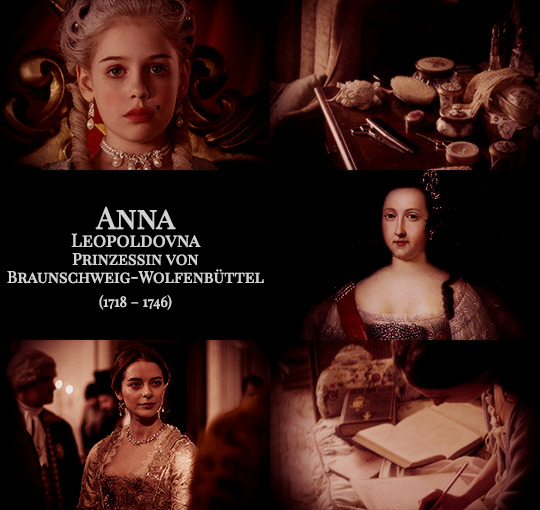


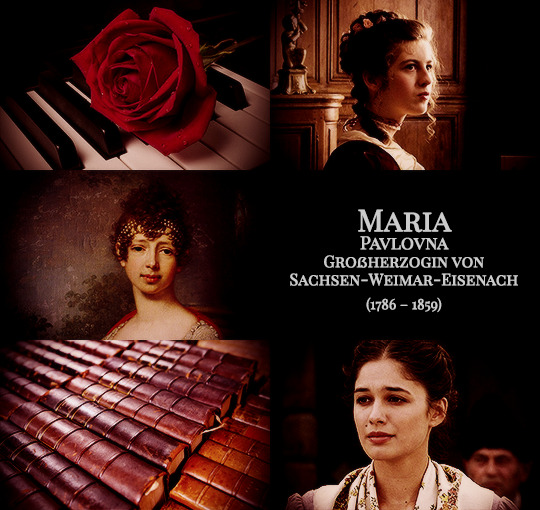
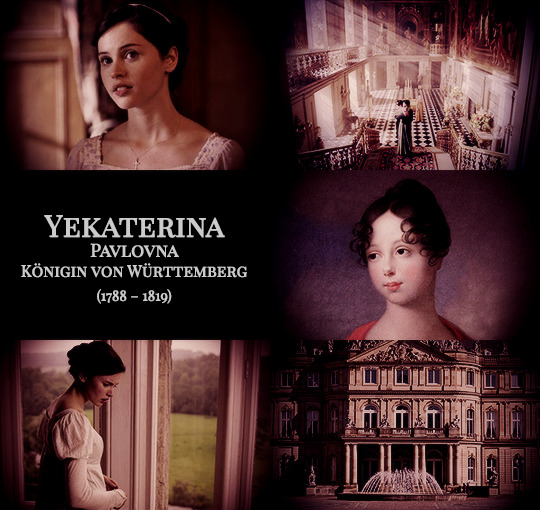


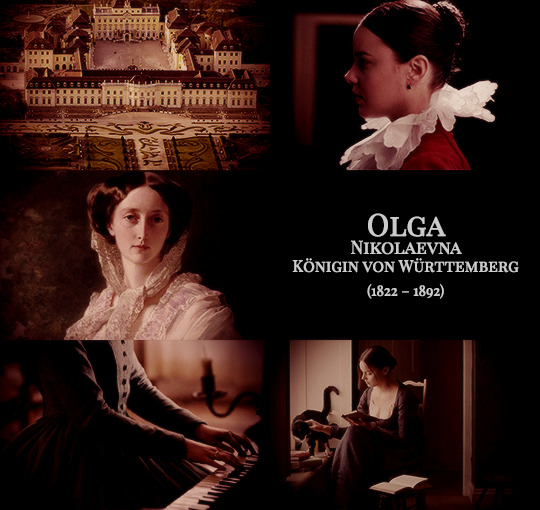

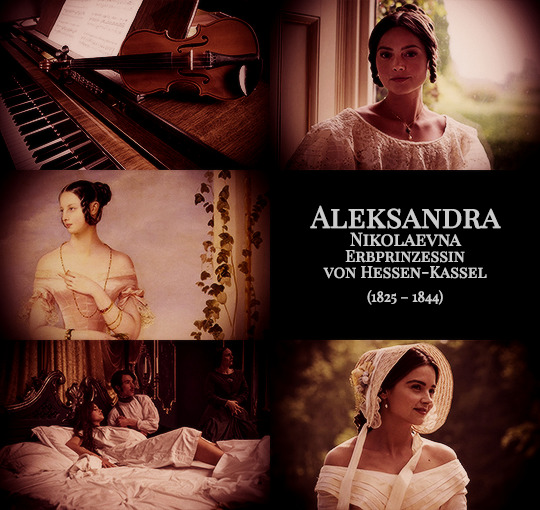
Women of the House of Romanov, part II
Anna Leopoldovna. Daughter of Karl Leopold, Herzog zu Mecklenburg and Tsarevna Anna Ivanovna. Mother of Yekaterina Antonovna and Yelisaveta Antonovna of Brunswick-Lüneburg.
Grand Duchess Aleksandra Pavlovna. Daughter of Emperor Pavel I and Sophie Dorothee von Württemberg.
Grand Duchess Yelena Pavlovna. Daughter of Emperor Pavel I and Sophie Dorothee von Württemberg. Mother of Marie zu Mecklenburg, Herzogin von Sachsen-Altenburg.
Grand Duchess Maria Pavlovna. Daughter of Emperor Pavel I and Sophie Dorothee von Württemberg. Mother of Marie von Sachsen-Weimar-Eisenach, Prinzessin von Preußen and Augusta von Sachsen-Weimar-Eisenach, Königin von Preußen.
Grand Duchess Yekaterina Pavlovna. Daughter of Emperor Pavel I and Sophie Dorothee von Württemberg. Mother of Marie Friederike Charlotte von Württemberg, Gräfin von Neipperg and Sophie von Württemberg, Koningin der Nederlanden.
Grand Duchess Anna Pavlovna. Daughter of Emperor Pavel I and Sophie Dorothee von Württemberg. Mother of Sophie van Oranje-Nassau, Großherzogin von Sachsen-Weimar-Eisenach.
Grand Duchess Maria Nikolayevna. Daughter of Tsar Nikolai I and Charlotte von Preußen. Mother of Maria Maximilianovna von Leuchtenberg; Yevgeniya Maximilianovna von Leuchtenberg, and Yelena Grigorievna, Countess Stroganov.
Grand Duchess Olga Nikolayevna. Daughter of Tsar Nikolai I and Charlotte von Preußen.
Grand Duchess Maria Mikhailovna. Daughter of Grand Duke Mikhail Pavlovich and Charlotte von Württemberg.
Grand Duchess Aleksandra Nikolayevna. Daughter of Tsar Nikolai I and Charlotte von Preußen.
#historyedit#house of romanov#russian history#european history#women's history#history#royalty aesthetic#nanshe's graphics
107 notes
·
View notes
Text
OTD in Music History: Historically important pianist and pedagogue Theodore Leschetizky (1830 - 1915) dies in Germany.
Leschetizky was the beneficiary of an enviable musical pedigree: In his youth, his father took him to study in Vienna with famed pedagogues Simon Sechter (1788 - 1867) and Carl Czerny (1791 - 1957), and at age eleven he actually performed a Czerny piano concerto under the baton of Franz Xaver Wolfgang Mozart (1791 - 1844) -- the son of Wolfgang Amadeus Mozart (1756 - 1791).
Quickly recognized as a master teacher in his own right, at the invitation of his friend Anton Rubinstein (1829 - 1894), Leschetizky traveled to St. Petersburg to teach in the court of the Grand Duchess Yelena Pavlovna. Remaining there from 1852 to 1877, he was head of the piano department and one of the founders of the St. Petersburg Conservatory of Music. While in Russia, he married one of his most famous students, Anna Essipova (1851 - 1914).
In 1878, Leschetizky returned to Vienna and began teaching there, creating one of the most eminent private piano schools in the world. Promising pianists flocked from all over the world to his villa in the Währing Cottage District, and the list of his students reads like a veritable "Who's Who" of superstars from the so-called "Golden Age of Piano": Ignacy Jan Paderewski, Alexander Brailowsky, Ignaz Friedman, Ossip Gabrilowitsch, Mark Hambourg, Mieczyslaw Horszowski, Benno Moiseiwitsch, Artur Schnabel, Isabelle Vengerova, Paul Wittgenstein, . . .
Leschetizky's personal credo was "no life without art; no art without life!"
PICTURED: A beautiful cabinet photograph showing the elderly Leschetizky, which he has signed and inscribed to a friend in 1903.
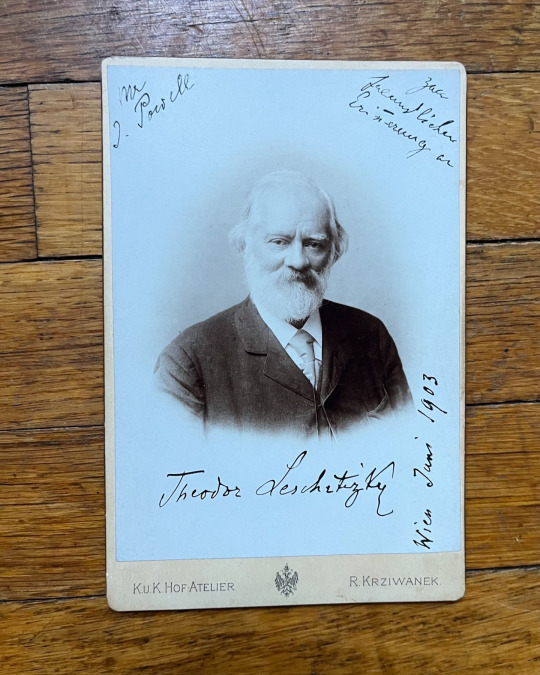


#Theodor Leschetizky#pedagogue#pianist#professor#composer#St. Petersburg Conservatory of Music#No life without art#no art without life#teacher#classical music#Leschetizky#piano#virtuoso#symphony#orchestra#concerto#piano concerto#Teodor Leszetycki#music history#maestro#Conservatory of Music#Conservatory#conductor#Virtuoso#conservatoire#conservatorium
9 notes
·
View notes
Text

I posted 294 times in 2021
110 posts created (37%)
184 posts reblogged (63%)
For every post I created, I reblogged 1.7 posts.
I added 491 tags in 2021
#royalty - 102 posts
#royals - 102 posts
#princesses - 82 posts
#princess - 79 posts
#19thcentury - 68 posts
#crinolinedress - 19 posts
#victorianera - 12 posts
#crinoline - 12 posts
#victorian - 8 posts
#prussia - 7 posts
Longest Tag: 20 characters
#serbian royal family
My Top Posts in 2021
#5

Princess Viktoria of Prussia
35 notes • Posted 2021-01-22 12:05:20 GMT
#4

Princess Elisabeth of Schwarzburg-Rudolstadt
42 notes • Posted 2021-07-18 10:14:23 GMT
#3

Grand Duchess Anna Pavlovna of Russia, Queen of Netherlands
42 notes • Posted 2021-03-03 22:04:48 GMT
#2

Prince Albert
44 notes • Posted 2021-02-15 15:42:46 GMT
#1
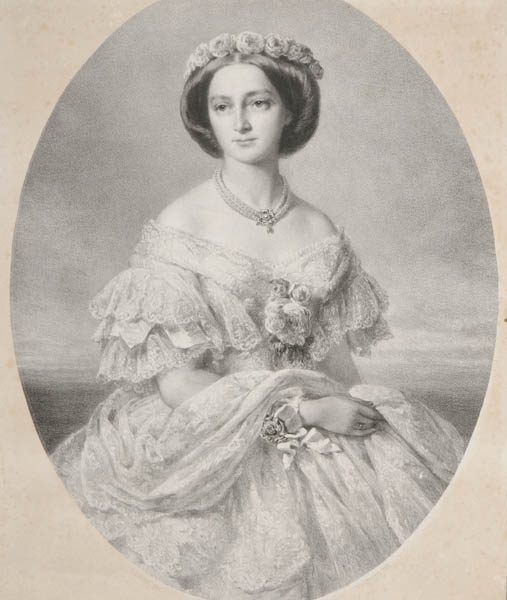
Princess Adelaide of Hohenlohe-Langenburg
45 notes • Posted 2021-05-19 13:55:34 GMT
Get your Tumblr 2021 Year in Review →
7 notes
·
View notes